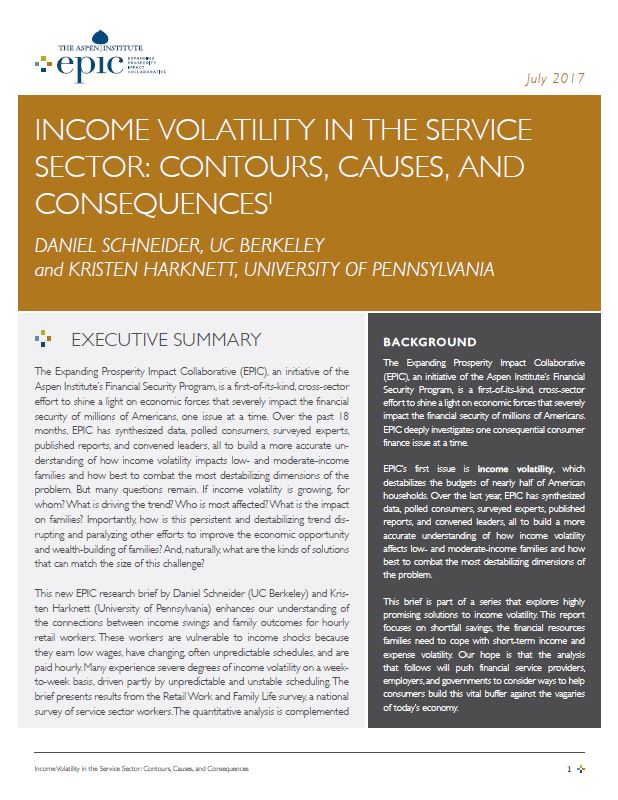This new EPIC research brief by Daniel Schneider (UC Berkeley) and Kristen Harknett (University of Pennsylvania) enhances our understanding of the connections between income swings and family outcomes for hourly retail workers. These workers are vulnerable to income shocks because they earn low wages, have changing, often unpredictable schedules, and are paid hourly. Many experience severe degrees of income volatility on a week-to-week basis, driven partly by unpredictable and unstable scheduling. The brief presents results from the Retail Work and Family Life survey, a national survey of service sector workers. The quantitative analysis is complemented with vignettes drawn from 25 in-depth interviews with San Francisco Bay-area parents working in retail or food service.
Some of the key findings:
• Income swings are common and sizeable among hourly workers: In a survey of 6,000 hourly non-managerial workers employed at 30 of the largest retail and fast-food companies, half report that their income varies from week to week. In the month prior to completing the survey, a typical respondent experienced a 34% difference between the lowest and highest earning weeks.
• Unpredictable schedules are a significant driver of income volatility: 54% of workers with variable schedules report week-to-week income volatility, compared to 40% of those with a regular day schedule.
• Volatility is connected to financial insecurity: Workers who report week-to-week volatility are 20% more likely to experience financial hardship; those with high levels of volatility were 12% more likely to have trouble paying bills. Additionally, workers who reported higher volatility were less likely to feel confident about their ability to cope with hypothetical shocks and more likely to turn to high-cost alternative financial services than those with steady earnings.
Solving for income volatility means reducing it where possible and helping families manage when they experience volatility. Governments at all levels, employers, the financial service industry, and, of course, the nonprofit sector have the capacity to advance a diverse range of potential solutions, and all their efforts are needed. The EPIC process has identified six solution areas that show promise to reducing the incidence of income volatility and the negative consequences described in this paper: predictable scheduling, short-fall savings, hybrid financial products, payroll innovations, unemployment insurance, and wage insurance. Each solution is described in more detail – including the role for the private and public sector – in a series of briefs available through the EPIC website.


